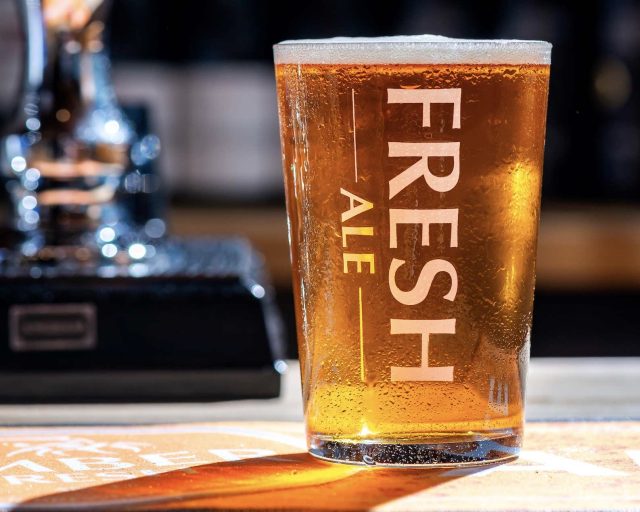Otter Brewery asks more big brewers to launch fresh ales
Otter Brewery is “delighted” Carlsberg Marstons (CMBC) has launched fresh ales and asks AB InBev and Heineken to join the category too.

Otter Brewery originally developed and launched fresh ale as a new beer category almost a year ago to bridge the gap between cask ale, craft beer and lager. CMBC then introduced its own offering last week across its Wainright and Hobgoblin brands.
Speaking to the drinks business, Otter Brewery managing director Patrick McCaig said: “When we launched the Fresh Ale concept last year, our hope was that this could be the start of an evolution to help save cask ale. After having significant success ourselves with the product (which is now in over 100 pubs), we are delighted that CMBC has entered the category.”
McCaig explained that “fresh ale is a product that has significant benefits for the cask ale market, not only as it bridges the gap between craft beer, cask ale and lager, but it also brings innovation and a younger demographic to the cask end of the bar. For the operator it provides a product that has a 30 day shelf life, making it feasible to a much wider range of outlets than traditional cask. All too often a pint of cask ale can be disappointing and often this is largely due to the lack of throughput resulting from too many beers on the bar. Fresh ale comes with a guarantee of flavour and condition”.
Describing the category’s expansion and potential, McCaig told db: “We completely agree with CMBC in that fresh ale is designed to breathe energy and innovation into the cask end of the bar and is in no way the beginning of the end of cask ale.”
He observed how “currently, the majority of drinkers look to the ‘keg’ end of the bar to make their ‘bar call’” and suggested that “If the introduction of fresh ale means operators can begin to re-evaluate how they position categories on the bar (ale, lager, cider etc.) then cask ale will naturally get for more viability and footfall”.
McCaig admitted that he thought the category would benefit from companies like AB InBev and Heineken joining the fresh ale category.
Partner Content
McCaig also told db that he “would like to see all ales including the likes of Camden Pale and Neck Oil, at one end of the bar with lagers and ciders at the other. This will inevitably position cask ale amongst keg ale and with that generate a far greater visibility to the category we love and the one that needs attention (cask)”.
McCaig added: “We created fresh ale to reinvigorate cask ale and we believe that CMBC coming into the category can only be a good thing for cask ale as a whole.”
Last year, db looked into the fresh ale category concept when Otter first introduced it. Since CMBC revealed plans to launch its own, the Campaign for Real Ale (CAMRA) has stated it does not support the category and said it would confuse consumers.
Speaking exclsuively to db aout its thoughts on Otter Brewery calling on more brewers to joing the fresh ale category, CAMRA’s real ale, cider and perry campaigns director Gillian Hough said: “We have been crystal clear with every brewery that has approached us about their ‘fresh’ brewery-conditioned beers. They are not cask-conditioned beers, so calling them ‘fresh’ and selling them through cask handpulls is actively misleading consumers.”
Hough told db: “This smacks of a cynical marketing tactic, attempting to fool consumers into buying something they are not, and CAMRA will continue to oppose this misleading dispense method whenever we see it.”
The British Beer and Pub Association (BBPA) has, however, backed its launch into the beer and pub sector.
Related news
Find out the UK’s most affordable cities for food and drink




